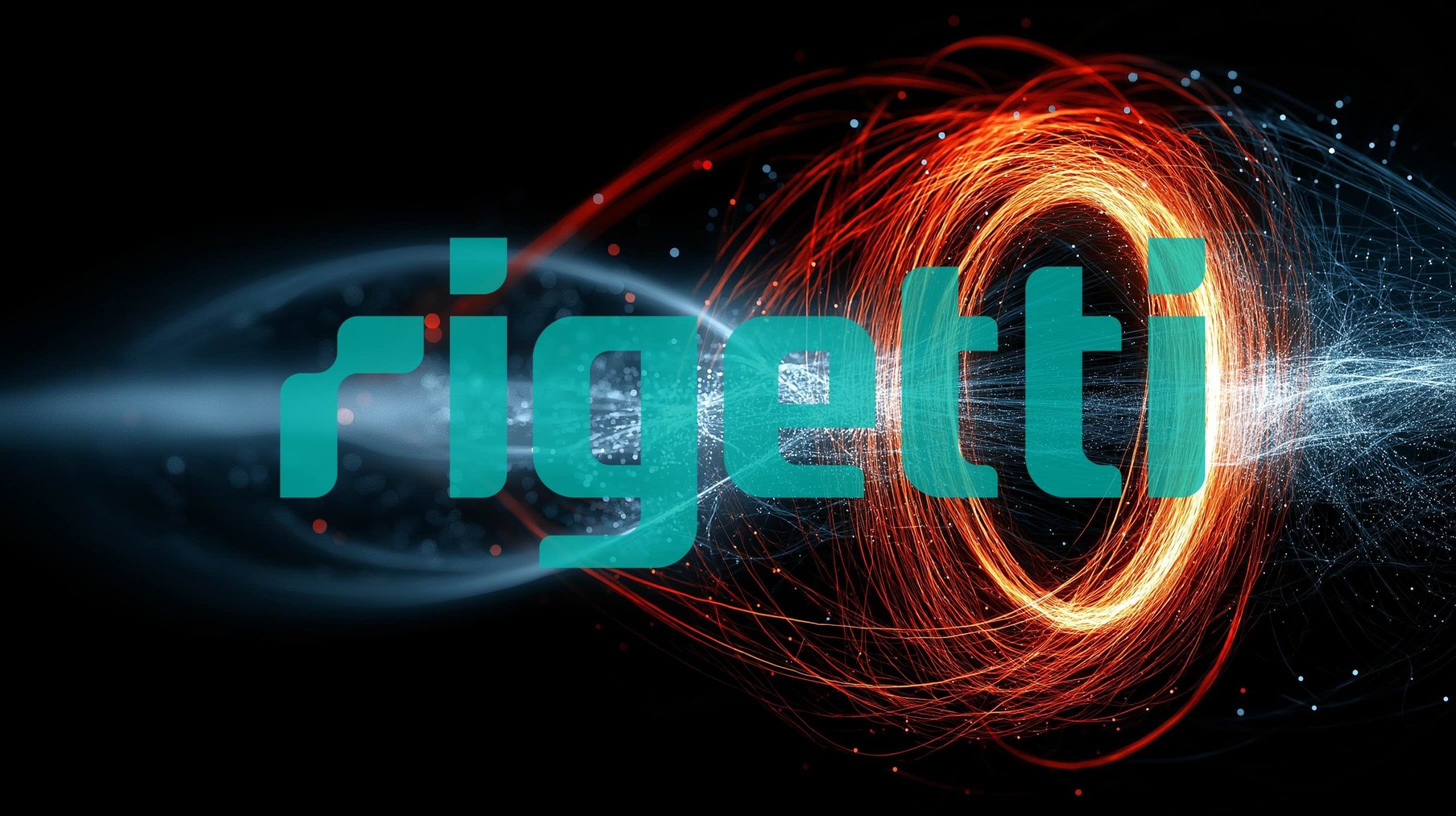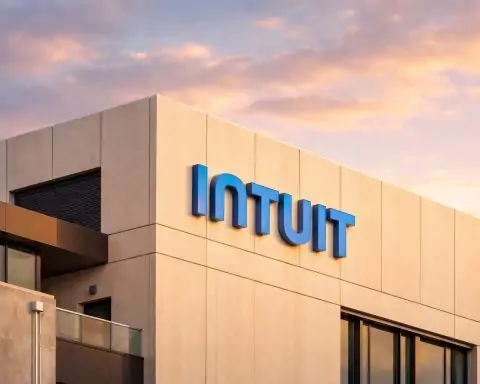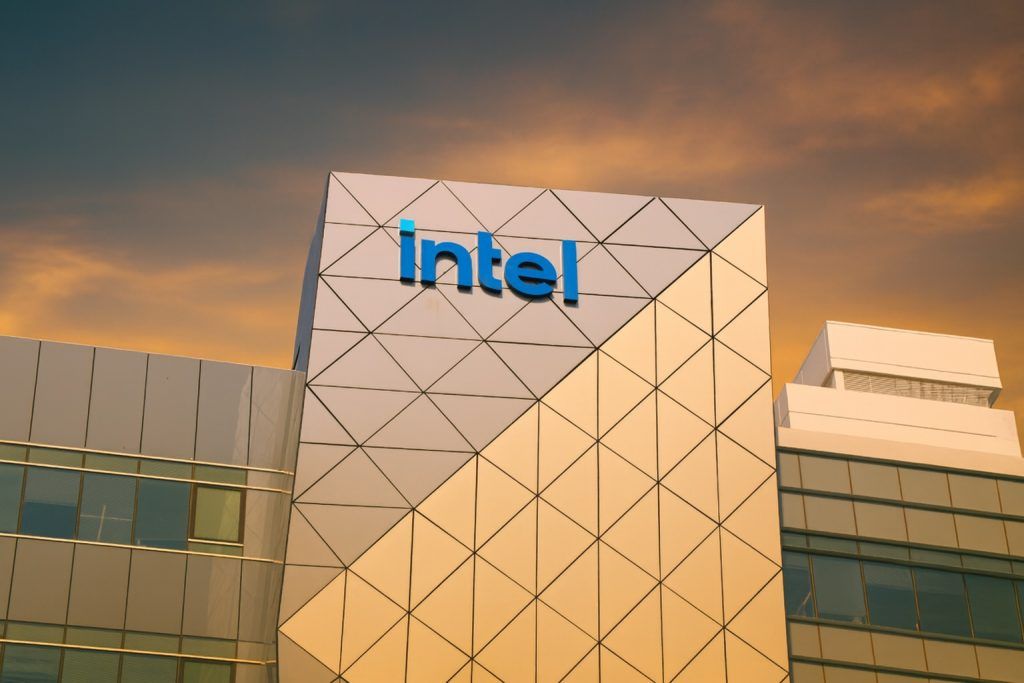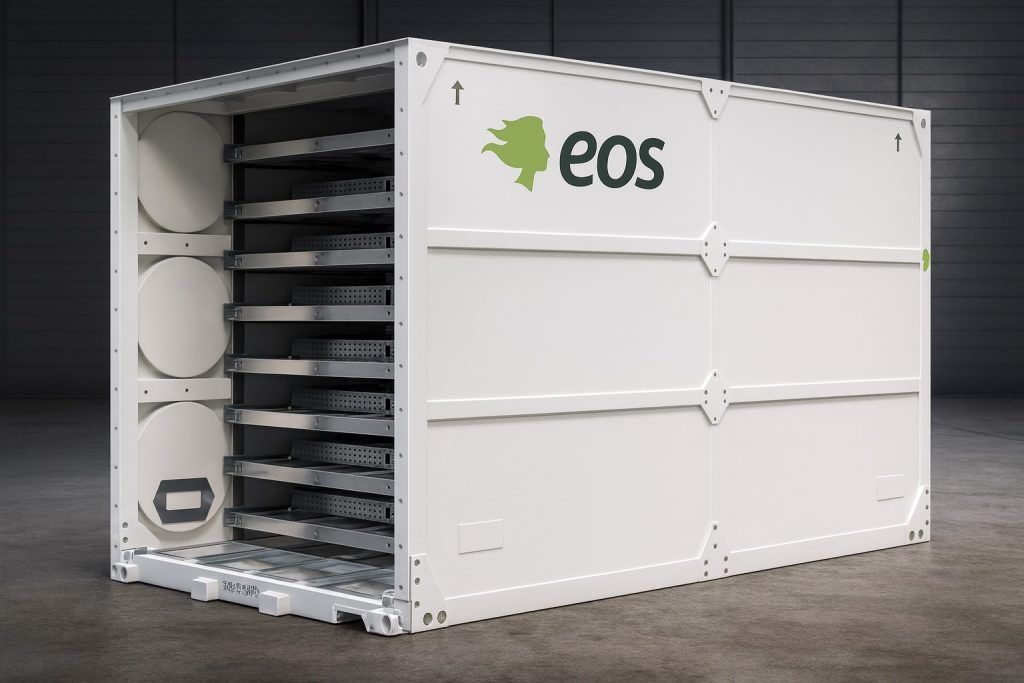- Meteoric Rise: Rigetti Computing (NASDAQ: RGTI) became a multi-billion-dollar high-flyer after surging over 5,000% in the past year, climbing from penny-stock levels to an all-time high of around $56 per share last week [1]. The 52-week range now spans from well under $1 to about $58 [2], epitomizing the stock’s wild volatility.
- Latest Price Pullback: RGTI stock has slipped back to the mid-$40s as of October 21, 2025, after a sharp late-week selloff and a -6.6% drop on Monday (Oct. 20) to $43.31 at close [3]. This is a modest retreat from last week’s peak, but shares remain up exponentially year-over-year – a staggering gain that few stocks can match [4].
- Deals Fuel Rally:Real-world wins stoked investor enthusiasm. In late September, Rigetti (with partner QphoX) secured a $5.8 million U.S. Air Force contract to develop quantum networking tech, and notched $5.7 million in purchase orders for two of its new Novera quantum computers (its first significant commercial hardware sales) slated for 2026 delivery [5] [6]. The company also launched a 36-qubit quantum processor via its cloud platform, marking a key R&D milestone [7]. Each announcement fueled the narrative that Rigetti’s quantum ambitions are turning into tangible progress, feeding the stock’s rapid ascent.
- Bubble Worries: Despite Rigetti’s roughly $15–18 billion market valuation, its annual revenue is only on the order of $8–10 million, with ongoing deep losses [8] [9]. The stock now trades at an astronomical 1,500×+ sales multiple [10]. Analysts and experts are flagging a huge disconnect between valuation and fundamentals, raising concerns that the quantum computing mania may be unsustainable [11]. A Seeking Alpha analyst bluntly labeled RGTI “massively overvalued” given its ~$17–18B market cap “despite questionable fundamentals and no near-term path to profitability.” [12]
- Analyst Sentiment: Wall Street sees long-term promise in Rigetti’s technology but remains cautious near-term. Every major analyst covering RGTI rates it a “Buy”, reflecting optimism about its quantum potential, yet their average 12-month price targets are only in the mid-$20s – roughly 50% below the stock’s recent trading levels [13]. Even bullish analysts warn the stock’s parabolic run “may be unsustainable,” predicting a pullback as reality catches up to hype [14]. Some suggest it “might be too early” to buy at these heights, absent a major breakthrough or a significant dip [15].
Record Surge and Wild Volatility
Rigetti’s share price went on a breathtaking tear in 2025, riding a speculative wave in quantum computing stocks. At the start of the year RGTI traded below $1; by mid-October it had rocketed into the $50s [16]. The stock peaked at $56.34 on October 15 – an almost 50-fold increase in one year. In a single session on Oct. 13, Rigetti spiked 25% to around $54.91 [17], catapulting its market capitalization into the mid-teens of billions. Such frenzied gains eclipsed even other “Quantum Four” peers. For instance, IonQ’s stock is up about 700% year-over-year, and D-Wave Quantum has surged roughly 2,000–4,000% over the same period – huge climbs, yet still overshadowed by Rigetti’s 5,000% moonshot [18] [19].
However, Rigetti’s quantum rocket has proven volatile. After topping out last week, the stock abruptly plunged ~15% on Oct. 16 as traders rushed to lock in profits [20] [21]. That rout continued into Friday and Monday, with RGTI sinking from the $ Fifty’s into the $ Forty’s by the week’s end [22] [23]. On Monday, Oct. 20, shares fell another -6.62% to close at $43.31, marking a third straight day of declines [24]. All told, Rigetti pulled back roughly 25% from its peak in a matter of days. Even after this dip, the stock is still up astronomically from a year ago – underlining both the thrill and peril of its rise [25]. The 52-week trading range now runs from mere cents to nearly $60 [26], encapsulating the roller-coaster nature of this quantum boom-and-bust cycle.
Notably, no negative news from Rigetti’s operations triggered the sell-off. Instead, broader market jitters and the stock’s own overheated technical signals sparked the reversal [27]. Observers noted that after such a parabolic ascent, it was almost inevitable some investors would hit the brakes at the first hint of trouble [28]. A scare in the banking sector on Oct. 16 (unrelated to Rigetti) sent traders scrambling for safe havens, and high-flying speculative names like RGTI were hardest hit [29]. The plunge was exacerbated by profit-taking and perhaps a realization that even in the futuristic realm of quantum tech, stocks “don’t go up in a straight line forever” [30]. In Rigetti’s case, news also surfaced that CEO Subodh Kulkarni had quietly sold 1,000,000 shares (essentially his entire personal stake) earlier in the year [31]. That insider sale, combined with technical indicators showing the stock was extremely overbought, gave traders another reason to cash out after the euphoric climb [32]. In short, after an unbelievable run-up, RGTI got a reality check – even quantum rockets are bound by the gravity of fundamentals eventually.
Hype Fueled by Deals and Breakthroughs
What launched Rigetti’s stock into orbit? A steady drumbeat of corporate wins, partnerships, and technology milestones over the past several weeks helped validate the company’s prospects – and supercharged investor optimism. In late September, Rigetti announced a trio of headline-grabbing developments:
- Military Contract: The U.S. Air Force awarded Rigetti (in partnership with Dutch startup QphoX) a $5.8 million contract to develop quantum networking technology [33]. This 3-year Air Force Research Lab project positions Rigetti as a player in defense-related quantum applications – a stamp of credibility in a field often criticized as experimental. The deal signaled that major institutions see practical value in Rigetti’s tech.
- First System Sales: Around the same time, Rigetti revealed it had secured $5.7 million in purchase orders for two “Novera” quantum computers [34]. These orders – reportedly from an Asia-based manufacturer and a U.S. AI startup – mark Rigetti’s first significant commercial hardware sales, with delivery expected in 2026 [35]. For a company that booked only ~$1.8 million in revenue last quarter, landing multi-million dollar orders was a breakthrough moment, suggesting early market demand for its quantum systems.
- New Quantum Chip: Technologically, Rigetti rolled out a new 36-qubit quantum processor available via its cloud platform [36]. This multichip processor (with a reported two-qubit fidelity of ~99.5%) represents an advance in performance and scale for Rigetti’s superconducting qubit design [37] [38]. It expands the capacity of Rigetti’s Quantum Cloud Services and showcases progress toward more powerful quantum computing hardware.
Each of these developments reinforced the narrative that Rigetti is not just hype – it’s achieving real milestones on the road to useful quantum machines. The promise of tangible revenue (from government contracts and product sales) gave fundamentally minded investors something to latch onto amid the speculation. “These tangible achievements…have helped fuel the narrative that Rigetti is making real strides, not just riding hype,” noted TechStock², after the flurry of announcements [39]. In other words, concrete news helped legitimize Rigetti’s moonshot, attracting both tech-focused investors and momentum traders looking for the next big thing.
Broader industry news also poured gasoline on the fire. In early October, banking giant JPMorgan Chase unveiled a sweeping $10 billion “frontier tech” initiative that explicitly highlighted quantum computing as a key investment area [40] [41]. This institutional endorsement of quantum tech sent a bullish wave through the entire sector. Rigetti’s stock jumped 25% in one day on the JPMorgan news alone [42] [43], as the market interpreted it as a sign that big-money support for quantum R&D is ramping up. Additionally, public fascination with quantum computing got a boost when the 2025 Nobel Prize in Physics recognized pioneering work in quantum information science [44]. That headline, coming amid Rigetti’s rally, added to the sense that “the field’s moment has arrived.” In short, Rigetti found itself at the nexus of company-specific breakthroughs and surging industry buzz – a perfect storm driving its stock into the stratosphere. As one analyst quipped, each new contract or partnership “sends more investors scrambling to grab a piece of the ‘next big thing.’” [45]
Sky-High Valuation Spurs Jitters
The flip side of Rigetti’s fairy-tale rally is a sobering financial reality. The company remains in an early-stage, deeply unprofitable state, which makes its towering valuation hard to justify by traditional metrics. Rigetti’s latest quarterly revenue was just $1.8 million, while its net loss was nearly $19.8 million [46]. In fact, sales declined 42% year-over-year last quarter (Q2 2025) as government project revenues ebbed [47]. Yet thanks to feverish stock gains and share issuance, Rigetti’s market capitalization recently swelled to roughly $17–18 billion [48]. That means the stock is trading at an eye-popping 1,500+ times its annual sales – “an almost unprecedented multiple,” according to TechStock²’s analysis [49]. By comparison, even many red-hot AI and semiconductor stocks trade at a small fraction of that valuation.
In the view of some skeptics, RGTI’s valuation has become utterly detached from reality. One Seeking Alpha analyst bluntly argued that Rigetti is “massively overvalued” at these levels, citing its ~$17.8B market cap “despite questionable fundamentals and no near-term path to profitability.” [50] Another commentator pointed out the company’s price-to-book ratio hit ~25x (versus ~3x for the semiconductor industry average) during the surge, underscoring how much optimism is baked into the stock [51]. In essence, investors are pricing in years – if not decades – of future success that have yet to materialize. Rigetti’s revenues are minuscule, and meaningful profits may be a very distant prospect. “With viable quantum computers potentially over a decade away, management will likely need to substantially dilute current shareholders” to keep funding R&D, The Motley Fool warned in a stark assessment [52]. (Notably, Rigetti already issued 75 million new shares in a June 2025 offering, raising $350 million but diluting the share count by 74% [53].)
Wall Street analysts covering Rigetti are walking a fine line between enthusiasm and caution. According to TS2 and other reports, every sell-side analyst that officially rates RGTI still has it as a “Buy” [54] – a vote of confidence in Rigetti’s long-run potential to capitalize on the coming quantum revolution. These analysts laud Rigetti’s technology-first strategy (the company designs and fabricates its own superconducting chips and develops its software stack in-house). “Rigetti takes a comprehensive approach… designing and building its own [quantum] chips… and creating a programming language,” The Motley Fool noted, praising the startup’s end-to-end vision [55]. In other words, Rigetti is seen as one of the leading pure plays in quantum computing – a small company with a potentially big stake in a future $100+ billion market.
Yet even the bulls did not foresee the stock zooming this high, this fast. Most analysts’ 12-month price targets sit in the $20s [56], roughly half of RGTI’s recent price. B. Riley Financial, for example, raised its target to $35 back in September – a call that seemed optimistic at the time for a stock then under $20, but one that Rigetti blew past within weeks [57]. Benchmark Capital in early October hiked its target all the way to $50 amid the frenzy [58], yet even that lofty goal was exceeded when RGTI hit $58. The fact that shares outran Wall Street’s best-case scenarios so quickly is, in itself, a warning sign of overheating. Analysts universally acknowledge the huge gap between Rigetti’s stock price and its current fundamentals. Several have openly cautioned that the “quantum computing stock boom may be unsustainable”, predicting that lofty valuations will compress as the initial hype gives way to execution challenges [59]. One analyst flatly wrote that for Rigetti, “if anything, it’s too early” to jump in now – suggesting would-be investors wait for a major correction or clear technological breakthrough before buying at these levels [60].
Insiders seem to share some of these reservations. In addition to the CEO’s earlier share sale, Rigetti’s CTO and a board director each sold sizeable blocks of stock in recent months as prices surged [61] [62]. On October 17, Director Helene Sanford sold 62,000 shares at an average ~$44.89 (netting ~$2.78 million) [63]. While insiders may have personal reasons for selling, such moves can spook investors when a stock is priced for perfection. To some, the insider sales and cautious analyst tone are reminders that the road to quantum profitability will be long and uncertain. As one Reddit user skeptically remarked amid Rigetti’s run-up: “Quantum is totally overhyped… The only [company] which is actually trustworthy is IBM.” [64] That sentiment – favoring established tech giants over speculative pure-plays – hints at the skepticism underlying the hype.
Rigetti vs. IonQ, D-Wave, and Big Tech Rivals
Rigetti’s rise is part of a broader quantum computing stock rally that has lifted several peers – but each player’s story is a bit different. IonQ (NYSE: IONQ), another well-known quantum startup (using trapped-ion qubit technology), has seen its stock climb roughly 6×–8× this year amid similar optimism. IonQ’s shares are up about 570–700% year-over-year [65], a massive gain in its own right though far less extreme than Rigetti’s 50× explosion. IonQ has impressed investors with steady technical progress (the company has reported advancing the power of its ion-trap systems each year) and partnerships with firms like Amazon and Hyundai. Its market cap, while lofty, has been in the single-digit billions – making IonQ look almost “reasonable” next to Rigetti’s richer valuation. Some observers view IonQ as a somewhat more mature player with a clearer technology roadmap, which may explain why its stock hasn’t swung as wildly as Rigetti’s.
D-Wave Quantum (NYSE: QBTS), by contrast, was even more of a penny stock before the recent boom. Specializing in quantum annealing computers (a different approach geared toward optimization problems), D-Wave’s stock surged from literally under $0.50 to around $10+ in the past year – delivering a mind-boggling multi-thousand-percent return. By some counts D-Wave is up over 3,000–4,000% in a year [66] [67]. This leap has come despite D-Wave’s small revenue base and ongoing cash burn, similar to Rigetti. In October, D-Wave announced new international partnerships and saw its shares jump in sympathy with Rigetti and IonQ. However, D-Wave also attracted short-seller scrutiny earlier in the year, and some analysts question its long-term approach since annealing computers, while useful for niche tasks, are not the general-purpose quantum machines that Rigetti, IonQ, and others are pursuing. All told, the pure-play quantum stocks – Rigetti, IonQ, D-Wave, and Quantum Computing Inc. (NASDAQ: QUBT) – have all delivered eye-popping gains (from +700% to +6,000% in a year) [68]. This entire group has ridden the wave of speculative fervor for next-gen tech. But they also share common risks: tiny revenues, big losses, and the need for continual funding until the technology matures.
Meanwhile, the incumbents in the field, tech giants like IBM, Google, Amazon, and Microsoft, remain a formidable presence – even if their stock prices haven’t gone haywire like the startups. IBM (NYSE: IBM), for example, has been investing heavily in quantum R&D for years (it introduced a 127-qubit processor in 2021 and a 433-qubit chip in 2022). IBM’s stock saw a modest boost this year – in fact, it was the best-performing Dow Jones component in September amid excitement over its quantum progress [69]. But as a $100+ billion diversified company, IBM’s shares move on many factors, not just quantum news. Likewise, Alphabet (Google’s parent) and Microsoft are pouring billions into quantum research (from Google’s record-setting experiments in quantum supremacy to Microsoft’s topological qubit efforts). These giants, with their vast resources and cloud infrastructure, pose a long-term competitive threat to pure-plays like Rigetti [70]. They can afford to attract top talent and endure years of R&D with little revenue. Notably, Amazon’s cloud unit AWS offers Amazon Braket, a service giving customers access to quantum hardware from Rigetti, IonQ, and others – while Amazon is also developing its own quantum processors [71] [72].
Famed investor Warren Buffett has even indirectly waded into quantum computing via Amazon. Buffett’s Berkshire Hathaway owns a stake in Amazon, which one Motley Fool report dubbed “Buffett’s favorite quantum computing stock” – largely because of AWS’s quantum initiatives [73] [74]. Tellingly, Buffett has avoided betting on any pure-play quantum names like RGTI, IonQ or D-Wave. His preference highlights how many conservative investors would rather get quantum exposure through big, established tech firms than through highly speculative startups. The big tech players’ involvement is a double-edged sword: their advancements help validate the field (bringing credibility and potential business to smaller firms via partnerships), but they could also dominate the industry in the long run, potentially squeezing out less-capitalized competitors [75] [76]. For now, Rigetti and its peers enjoy first-mover status as publicly traded quantum pure-plays, but they’re racing to achieve technological supremacy before the giants fully deploy their might.
Outlook: Quantum Dreams vs. Economic Reality
Looking ahead, Rigetti faces a pivotal test common to all breakthrough tech darlings: Can it turn revolutionary potential into a sustainable business? In the near term, most experts expect continued volatility. The stock’s steep pullback in recent days may not be the last; price swings of 10%+ in a single day have become routine for RGTI, and that turbulence will likely persist. News of any technical achievement, big contract, or industry development could send shares soaring again – or, conversely, any disappointment or broader market sell-off could trigger another rapid dive. “In the short term, the market is likely to remain highly volatile,” observed a MarketMinute analysis, noting that quantum stocks will gyrate with each new headline and shifting sentiment [77] [78].
Forecasts for Rigetti’s stock diverge wildly. Momentum-focused models remain bullish – for example, one quantitative forecast suggests that given the current uptrend, RGTI could rise another ~160% over the next three months, potentially trading between $82 and $150 by early 2026 if the rally resumes [79]. Such rosy projections underscore the upside scenario if enthusiasm reignites. Traditional analysts, however, are much more subdued. The consensus 1-year price target is around $25–$30 [80], implying that Wall Street expects the stock to nearly halve from current levels as the initial hype cools off. In essence, professional analysts are betting that Rigetti’s valuation will “come back to earth” while the company methodically works through years of R&D and commercialization challenges.
For investors, the central question is whether Rigetti’s recent stumbles mark the beginning of a larger correction or just a healthy breather before another leg up. There is no doubt that quantum computing holds transformative promise – the ability to solve problems in minutes that would take classical supercomputers millennia [81] could revolutionize industries from cryptography to drug discovery. Rigetti, with its full-stack approach and early contracts, is positioned as a potential winner if quantum computing reaches its potential. But that “if” looms large. Most experts agree that practical, error-corrected quantum computers are still years away from widespread use (some say not until the 2030s or 2040) [82]. In the meantime, companies like Rigetti must navigate a long “quantum winter” of continued cash burn, technical hurdles, and likely dilution of shareholders to fund development [83].
The near-term outlook will hinge on a few factors. First, Rigetti’s ability to deliver on its recent contracts and orders will be closely watched – successful deployment of its Novera systems and hitting milestones in the Air Force project could build credibility. Second, any advances in qubit count, stability, or error correction that Rigetti achieves (or fails to achieve) will impact investor confidence. Third, macro conditions – such as investor appetite for speculative tech stocks – could sway RGTI dramatically. If the market continues to favor bold tech bets (as it has with AI stocks), quantum plays might retain support; but if risk aversion sets in, high-fliers like Rigetti could see sharper corrections.
For now, Rigetti Computing stands as a high-stakes bet on the future. The company has captured imaginations and delivered eye-catching gains, validating the excitement around quantum technology. Yet its story also serves as a reality check: even a leap into the next computing paradigm must eventually reckon with business fundamentals. As the Financial Times dryly noted during a past tech craze: trees don’t grow to the sky. The coming months will reveal whether Rigetti’s stock can stabilize and grow at a more measured pace, or whether this quantum bubble will deflate as fast as it inflated. Either way, the quantum revolution is underway – and Rigetti and its investors are learning in real time that pioneering a new frontier can be both wildly rewarding and perilously uncertain.
Sources: ts2.tech [84] [85] [86] [87] [88] [89]; StockInvest [90] [91]; MarketBeat [92] [93]; MarketMinute/WRAL [94] [95]; Seeking Alpha [96]; Motley Fool via Nasdaq [97] [98].
References
1. ts2.tech, 2. ts2.tech, 3. stockinvest.us, 4. ts2.tech, 5. ts2.tech, 6. ts2.tech, 7. ts2.tech, 8. ts2.tech, 9. ts2.tech, 10. ts2.tech, 11. ts2.tech, 12. seekingalpha.com, 13. ts2.tech, 14. ts2.tech, 15. ts2.tech, 16. ts2.tech, 17. ts2.tech, 18. ts2.tech, 19. markets.financialcontent.com, 20. ts2.tech, 21. ts2.tech, 22. ts2.tech, 23. ts2.tech, 24. stockinvest.us, 25. ts2.tech, 26. ts2.tech, 27. ts2.tech, 28. ts2.tech, 29. ts2.tech, 30. ts2.tech, 31. markets.financialcontent.com, 32. ts2.tech, 33. ts2.tech, 34. ts2.tech, 35. ts2.tech, 36. ts2.tech, 37. markets.financialcontent.com, 38. markets.financialcontent.com, 39. ts2.tech, 40. ts2.tech, 41. markets.financialcontent.com, 42. markets.financialcontent.com, 43. markets.financialcontent.com, 44. ts2.tech, 45. ts2.tech, 46. ts2.tech, 47. markets.financialcontent.com, 48. markets.financialcontent.com, 49. ts2.tech, 50. seekingalpha.com, 51. markets.financialcontent.com, 52. ts2.tech, 53. ts2.tech, 54. ts2.tech, 55. ts2.tech, 56. ts2.tech, 57. www.marketbeat.com, 58. www.marketbeat.com, 59. ts2.tech, 60. ts2.tech, 61. www.marketbeat.com, 62. www.marketbeat.com, 63. www.marketbeat.com, 64. ts2.tech, 65. markets.financialcontent.com, 66. markets.financialcontent.com, 67. markets.financialcontent.com, 68. markets.financialcontent.com, 69. www.alphaspread.com, 70. markets.financialcontent.com, 71. www.nasdaq.com, 72. www.nasdaq.com, 73. www.nasdaq.com, 74. www.nasdaq.com, 75. markets.financialcontent.com, 76. markets.financialcontent.com, 77. markets.financialcontent.com, 78. markets.financialcontent.com, 79. stockinvest.us, 80. www.marketbeat.com, 81. ts2.tech, 82. ts2.tech, 83. ts2.tech, 84. ts2.tech, 85. ts2.tech, 86. ts2.tech, 87. ts2.tech, 88. ts2.tech, 89. ts2.tech, 90. stockinvest.us, 91. stockinvest.us, 92. www.marketbeat.com, 93. www.marketbeat.com, 94. markets.financialcontent.com, 95. markets.financialcontent.com, 96. seekingalpha.com, 97. www.nasdaq.com, 98. www.nasdaq.com







